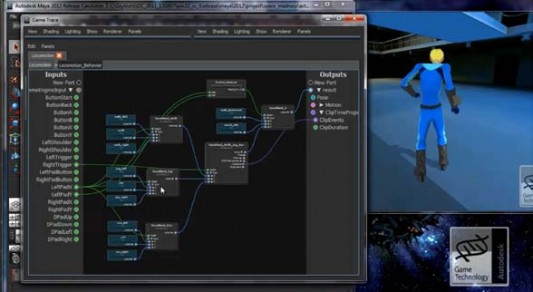Developers wanted more than a technology preview when Autodesk gave a demo of its new DCC middleware; they wanted the product.
As we have observed before, we think it makes sense for middleware to be more integrated with DCC content creation tools. (See “DCC software developers surf on shifting sand”) And Autodesk is headed in that direction. But how is all this going to work with tools and content that are not built by Autodesk? This concern is fueled by the unhappiness we’re hearing from game developers who are struggling with FBX and COLLADA.

Artists are artists and programmers are programmers, but is the schism between artists and programmers necessary? On the face of it, it would seem that artists are, usually, a different breed of cat from programmers. In the gaming world though, games start with a vision, they’re all about the graphics and animations. If the animations and the characters in a game don’t work, the game doesn’t work. At the recent Game Developers Conference in San Francisco, Autodesk unveiled Project Skyline, an idea the company has for improving the way content is developed. It is part of a larger idea Autodesk is calling the Modern Pipeline and it is key to integrating the middleware Autodesk is collecting.
In the traditional pipeline, the artists create game content which flows into the asset management bank. From that point, the artist doesn’t really get involved with that asset until something goes wrong and it has to go back to be re-worked. Project Skyline will work within Maya to help bridge the chasm between artist and programmer. It has three main features that will bring the artist deeper into the workflow.
First, Project Skyline will let artists see how animations work within a game engine. Using a feature called Live Linking, they can interact with the content in the game engine. Second, Skyline will offer visual programming. Users can create custom interactions using new visual programming tools. This feature is a node-based tool that eliminates the need for code. Third, users can test their work using Live Linking with the game engine.
An important part of the development path for Project Skyline will include the integration of middleware tools into the content creation and animation tools. Autodesk Product Manager Eric Plante told a preview audience for Skyline that FBX is not enough. Autodesk says this new level of integration helps eliminate the need to write low level animation code and data translators—at least within in the Autodesk toolset.
What do we think?
Autodesk probably really does believe that the world would be a much better place if everyone did things their way. The changes the company is planning for Maya address a fundamental problem that exists in all areas of digital content creation—the separation between artists and programmers. It would be an understatement to say there are grumblings and misgivings in the DCC community about the current state of affairs.
There were no such misgivings when Matthieu Mazerolle demonstrated Project Skyline at GDC. He said that all he heard from users was “when can we have it?” He said he had to keep telling the audience that Project Skyline was still in the concept stage.– K.M.





